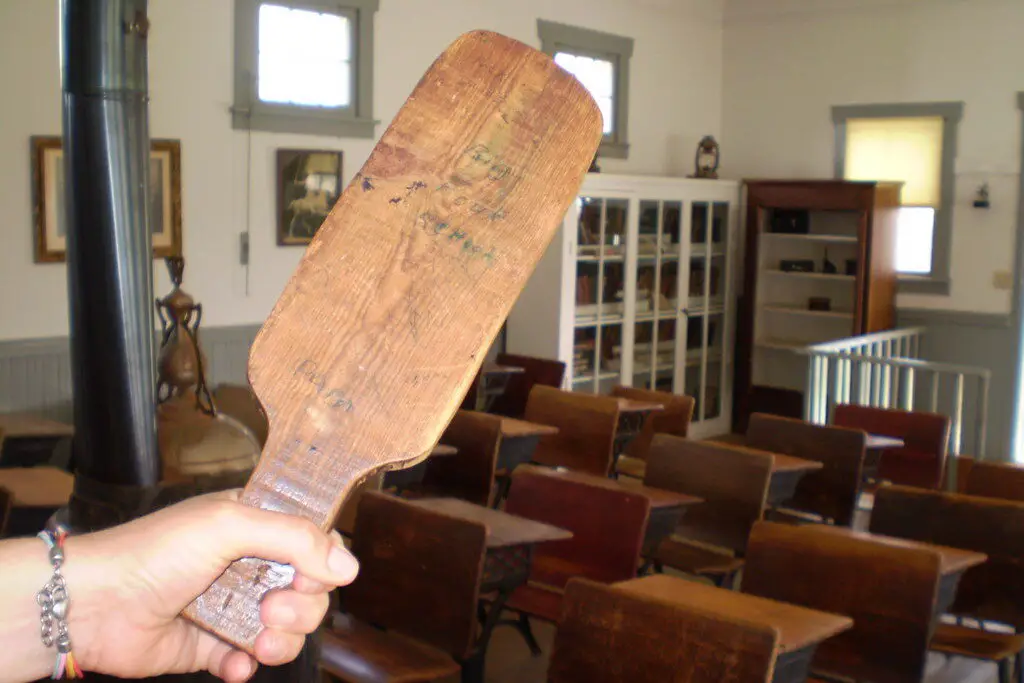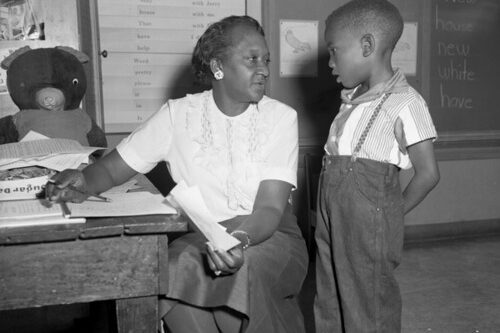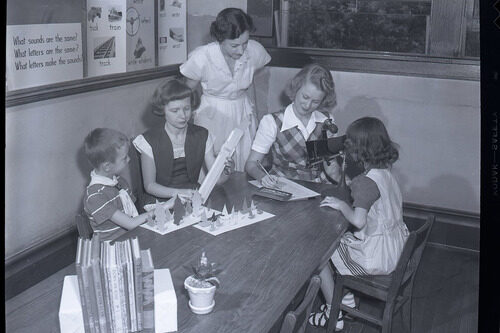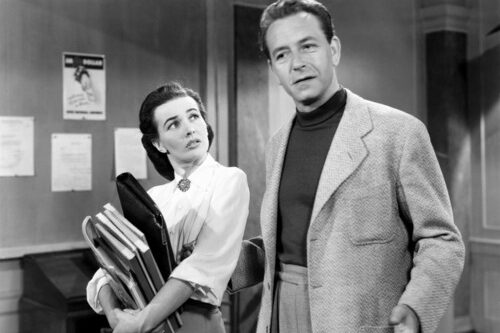1. They Could Paddle You—and They Did

Back in the ’60s, corporal punishment wasn’t just allowed—it was expected. Teachers kept wooden paddles in plain view like a warning sign, and if you acted up, you might get swatted in front of the whole class. There was no calling home, no write-up, no long talk about your feelings. Just a firm grip on your wrist and a quick walk to the front of the room. Some kids even knew which teachers had the “heavy hand” and tried to steer clear. And yes, parents usually sided with the teacher, not the child shares EdSurge.
What made it scarier wasn’t just the paddling—it was the anticipation. You never quite knew what would set a teacher off, and once you did something wrong, your stomach would twist waiting for the moment it landed. It wasn’t about teaching a lesson gently. It was about discipline, loud and clear adds Time Magazine.
2. Their Stares Could Stop Time

You know how today’s teachers might give a little side-eye or gently say your name to redirect you? A teacher in the ’60s could give you one look and silence an entire classroom. It was that icy, no-nonsense glare that seemed to freeze you to your chair. No words needed. No explanation. Just that look that made you want to shrink into your desk says CFT.org.
You’d try to avoid eye contact at all costs, especially if you were whispering or passing a note. If you caught that stare, you’d start sweating immediately. It said everything—I see you, and you are in big trouble. Kids straightened up in a heartbeat explains Prezi.
3. They Didn’t Believe in “Indoor Voices”

Today’s classrooms are full of soft encouragement and gentle tones. Not so in the ’60s. Teachers barked orders, shouted across rooms, and their voices rang out like they had microphones built into their throats. You could be two doors down and still hear someone getting corrected.
It wasn’t just yelling—it was commanding. Their voices were sharp and direct, and they made you jump to attention whether or not you were the one being spoken to. You didn’t dare talk back or even mutter under your breath. They had a way of booming over every other noise until you felt like you had no choice but to listen.
4. They Never Smiled Until June

It felt like smiling was a luxury most ’60s teachers couldn’t afford. They came into the classroom with a mission: teach, discipline, repeat. That meant you rarely saw them joke, laugh, or show anything resembling warmth—at least not until the school year was nearly over. Some even thought friendliness would undermine their authority.
Kids quickly learned to keep their distance emotionally. You didn’t know if they had pets, kids, or even a favorite color. They were just these stoic authority figures with perfectly stiff hair and no-nonsense shoes. And if they did smile? It usually meant someone was about to get in trouble.
5. They’d Call You Out in Front of Everyone

If you made a mistake on a test or spoke out of turn, you weren’t getting a quiet correction or a private chat. ’60s teachers called you out right there in front of the class. Mispronounce a word while reading aloud? Expect a sarcastic correction. Forget your homework? That might get read aloud.
There was no protecting your feelings. Embarrassment was just part of the learning experience, apparently. Teachers believed public shame would motivate you to do better next time. It didn’t always work, but it definitely kept kids on edge.
6. They Could Sniff Out Trouble Instantly

Somehow, teachers back then had an almost supernatural sense for mischief. You could be sitting still, barely whispering to a friend behind your hand, and they’d zero in like a hawk. It was like they had radar tuned to disobedience. One tap of the chalk on the board or a slow turn of the head, and boom—you were caught.
They didn’t need hall monitors or security cameras. Their instincts were razor-sharp, and they rarely let anything slide. You might think you were being sneaky, but they saw everything. It made even the boldest kids think twice before trying anything funny.
7. They Ruled with That Wooden Ruler

The wooden ruler wasn’t just for measuring. It was a tool of intimidation—tapping it on desks, slapping it into their palms, or using it to point dramatically at your mistakes. Some kids even got a gentle whack on the knuckles if they were unlucky enough to be in a strict classroom.
The sound alone was enough to make you sit up straighter. Tap, tap, tap—eyes on me. You never looked at rulers the same way after that. Even today, some people get flashbacks just walking into an office supply store.
8. They Had No Patience for Whining

If you tried to argue or complain in class, you’d be shut down fast. ’60s teachers didn’t want to hear your excuses. If your pencil broke, that was your problem. If you didn’t feel well, you better wait until lunch. Everything was treated as a character-building opportunity.
They expected you to tough it out, no matter what. Crying was met with cold indifference or a firm “Stop it.” There was no “checking in” or mental health support. You were expected to suck it up and keep going.
9. They Could Give You Homework for Breathing Wrong

Okay, maybe not literally, but it sure felt like it. If you were even slightly out of line, some teachers would assign extra homework as punishment. Whisper in class? That’s another page of math. Forget your book? Write a five-paragraph essay by tomorrow.
It wasn’t about reinforcing the lesson—it was about control. They knew nobody wanted more homework, so it was an easy weapon. Kids learned fast to follow the rules just to avoid spending recess with their nose in a notebook.
10. They Had Favorites—and They Weren’t Subtle

Unlike today, where teachers are trained to avoid favoritism, in the ’60s it was just part of the deal. Everyone knew who the “teacher’s pet” was. They got better seats, more praise, and maybe even extra snacks or responsibilities. The rest of the class? They were background noise.
If you weren’t one of the chosen few, you stayed out of the way. Some teachers didn’t even try to hide it. They had nicknames, inside jokes, and would beam when their favorite got an answer right. It made the classroom feel like a stage you were rarely invited to step on.
11. They Controlled the Thermostat of Fear

You never quite knew what mood a ’60s teacher would walk in with. One day they’d be silent and cold, the next day shouting before the bell even rang. Their energy set the tone for the whole room. If they were tense, you were tense.
Students tiptoed around them, trying not to spark anything. A wrong look or a crumpled piece of paper could trigger a full-on lecture. It was like walking on eggshells from 8 to 3. And somehow, that unpredictability made them even scarier.
12. They Weren’t Afraid to Get Personal

Teachers today are careful not to cross emotional boundaries—but back then, some teachers knew exactly what button to push. They’d bring up your messy desk, your untied shoes, or even how you held your pencil wrong. It wasn’t just correcting your work—it was correcting you.
Sometimes it felt like they had a file on every kid’s insecurities. A little joke here, a jab there. You’d laugh nervously, but it stung. And if the whole class laughed too? Forget it—you’d never live it down.
